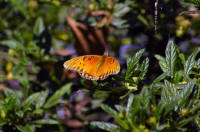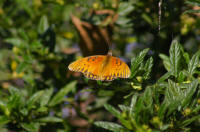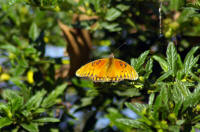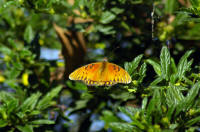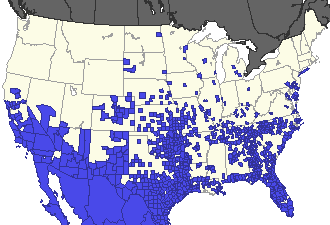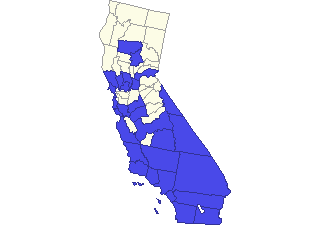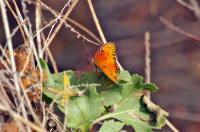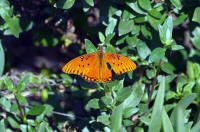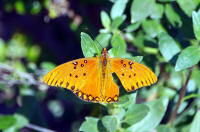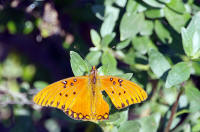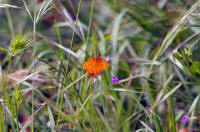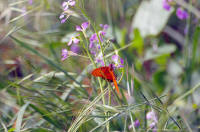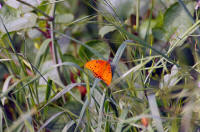|
Taxonomic Hierarchy |
Photo |
|
Kingdom: |
Animalia -- animal |
|
Phylum: |
Arthropoda -- arthropods |
|
Subphylum: |
Hexapoda -- hexapods |
|
Class: |
hexapoda -- insects |
|
Subclass: |
Pterygota -- iwinged insects |
|
Infraclass: |
Neoptera -- modern, wing-folding insects |
|
Order: |
Lepidoptera -- butterflies, moths |
|
Superfamily: |
Papilionoidea -- butterflies |
|
Family: |
Nymphalidae -- admirals, anglewings,
brush-footed butterflies |
|
Subfamily: |
Heliconiinae |
|
Genus: |
Agraulis |
|
Species: |
Agraulis vanillae |
|
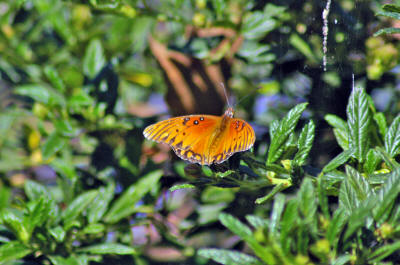 |
|
United States Range Map |
|
California Range Map |
|
|
|
|
|
|
Identification: |
|
Life history:
|
|
Upperside bright orange with black markings; 3
black-encircled white dots on
forewing leading edge. Underside brown; forewing with
orange at base; both wings with elongated, iridescent silver
spots. |
|
Males patrol for females, who lay eggs on many parts of the
host plant. Caterpillars feed on most parts of the host.
Adults overwinter in
the south. |
|
Flight: |
|
Wing Span: |
|
Throughout the year in south Florida and South Texas,
January-November in the north. Number of broods has not been
determined. |
|
2 1/2 - 3 3/4 inches (6.3 - 9.5 cm). |
|
Caterpillar Hosts: |
|
Adult Food: |
|
Various species of passion-vine including maypops (Passiflora
incarnata) and running pop (P. foetida). |
|
Nectar from lantana, shepherd\'s needle, cordias,
composites, and others.
|
|
Habitat: |
|
Season: |
|
Pastures, open fields, second-growth subtropical forest and
edges, city gardens. |
|
|
|
Remarks: |
|
Conservation: |
|
|
|
Not usually of concern.
NatureServe Global Status:
G5 - Demonstrably secure globally, though it may be quite
rare in parts of its range, especially at the periphery.
Management needs: Cultivate host plants.
|
|
Sources used to
Construct this Page: |
|
|
|
|
|
|
NatureServe is a non-profit conservation
organization. Global ranks indicate the rarity of a species at a
global scale. Species may be fairly common globally but imperiled
locally. Global ranks have the following meaning:
- G1 - Critically Imperiled - At very high risk of extinction
due to extreme rarity (often 5 or fewer populations), very steep
declines, or other factors.
- G2 - Imperiled - At high risk of extinction due to very
restricted range, very few populations (often 20 or fewer),
steep declines, or other factors.
- G3 - Vulnerable - At moderate risk of extinction due to a
restricted range, relatively few populations (often 80 or
fewer), recent and widespread declines, or other factors.
- G4 - Apparently Secure - Uncommon but not rare; some cause
for long-term concern due to declines or other factors.
- G5 - Secure - Common; widespread and abundant.
- * ? or Q = status unknown or uncertain
|


